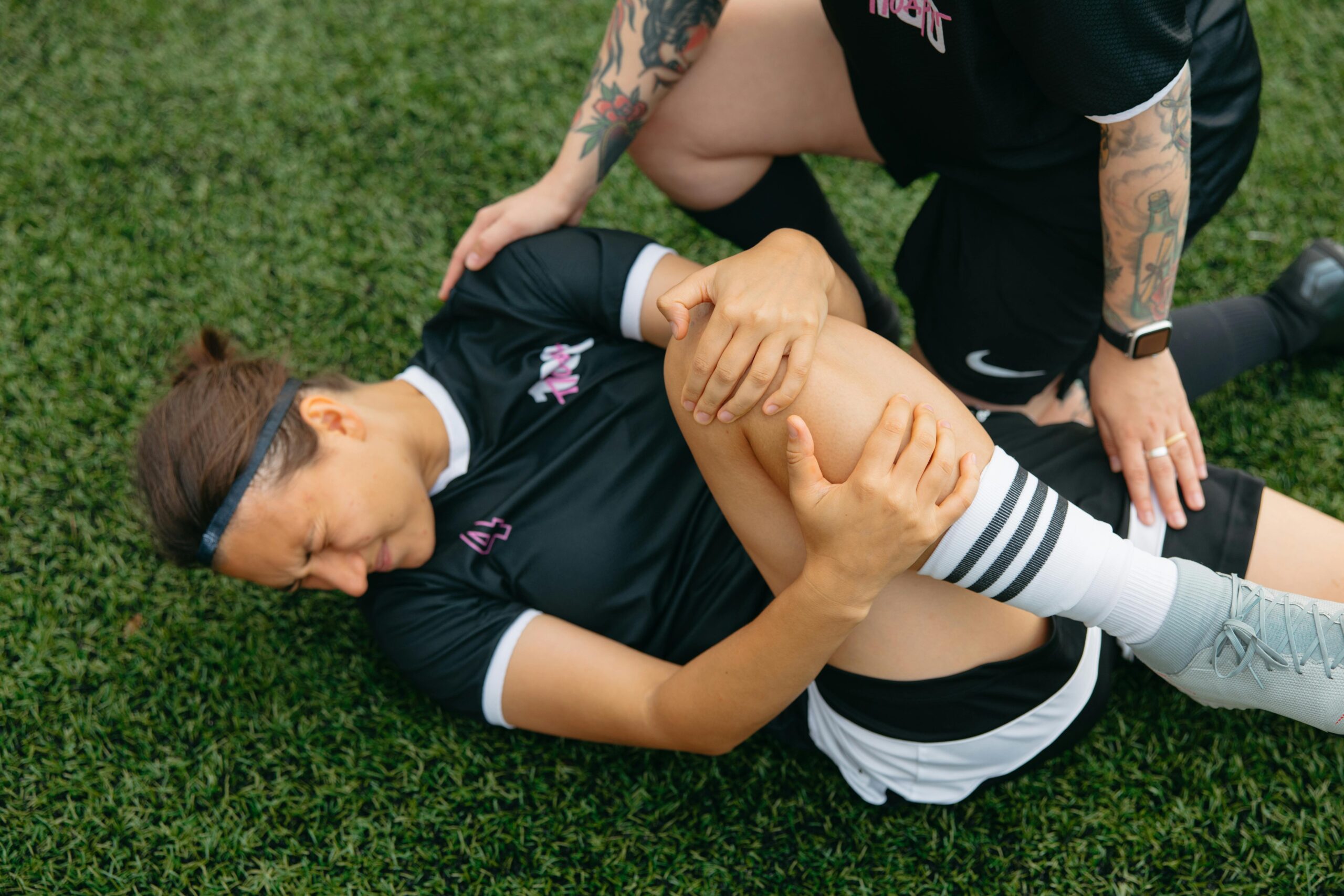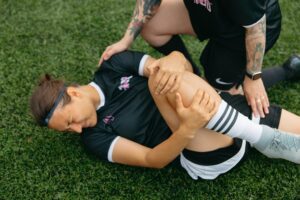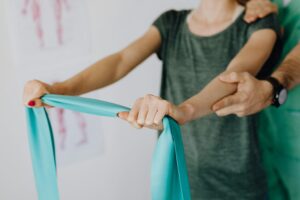Participating in sports is a fantastic way to stay active, but it can unfortunately lead to knee joint injuries. The knee, being a complex and highly stressed joint, is particularly susceptible to acute trauma and overuse. From an ACL injury to meniscus tears, each common sports injury of the knee has specific considerations for diagnosis, treatment, and recovery timelines. Dr Bradley Richmond, is passionate about all things sport and is committed to helping athletes of all ages and stages to get back on their feet safely and effectively.
Anterior Cruciate Ligament (ACL) Injury
The ACL is a crucial ligament for knee stability, often injured during sudden stops, pivots, or awkward landings in sports like football, basketball, or netball.
- Initial Assessment & Diagnosis: An ACL injury usually presents with a “pop” sensation, immediate pain, and swelling. Diagnosis involves clinical examination and an MRI scan to assess the injury severity. Medical assessment should ideally occur within days of such an injury.
- Non-Operative vs. Operative Decision: For many athletes, ACL reconstruction is recommended to restore knee stability and allow a safe return to pivoting sports. This decision is usually made within a few weeks to a couple of months of the injury, allowing for initial swelling to subside and sometimes a period of “pre-habilitation” (pre-operative physiotherapy).
- Surgical Timeline: If surgery is indicated, it can be performed within weeks to months.
- Rehabilitation & Return to Sport: This is the most extended phase. Post-operatively, a ROM (range of motion) brace is used for the first 6 weeks whilst mobilising and crutches are generally utilised for 1-3 weeks. Intensive physiotherapy is imperative with a structured program that gradually builds over time. Return to running (in a straight line) usually starts around 3-4 months, and a full, safe return to competitive, pivoting sports often takes 9-12 months, depending on strict functional criteria rather than just time elapsed.
Meniscus Tears
The menisci are the knee’s shock absorbers, prone to tearing from twisting injuries (especially in younger athletes) or degenerative wear (in older athletes).
- Initial Assessment & Diagnosis: Symptoms may include pain, swelling, and sometimes clicking or locking of the knee joint. Diagnosis is younger patients is confirmed with an MRI, usually within days to a few weeks of onset. In middle-aged or older patients X-ray is the preferred initial imaging, with MRI only indicated if there is mechanical locking symptoms.
- Treatment Decision: Surgery is not required for all patients, many improve with conservative management e.g., physiotherapy, pain relief, gentle exercise, steroid injection, and time. If surgery is indicated, meniscus repair (stitching the tear) or debridement (removing the torn part) will be undertaken arthroscopically depending on the tear type, location, and patient age. This decision may be made based on MRI findings, but must be reassessed intra-operatively.
- Surgical Timeline: If surgery is indicated, it can be performed relatively quickly, within a few weeks of diagnosis.
- Rehabilitation & Return to Sport:
- Debridement: Recovery is generally faster. Light activities can resume in 1-2 weeks, and return to sport often within 4-8 weeks, depending on the sport.
- Repair: This requires a longer, more protected recovery to allow the meniscus to heal. Non-weight-bearing with crutches and a brace limited to 90 degrees of motion must be used for the first 6 weeks. Return to sport can take 4-6 months or longer, with a gradual progression.
Patella (kneecap) Dislocation and Instability
This occurs when the kneecap temporarily dislocates from its groove, often from a twisting force or direct blow. It’s common in sports involving quick changes in direction. Once a dislocation has occurred, some people are prone to further recurrent dislocations, or subluxation i.e., a chronic feeling of instability.
- Initial Assessment & Diagnosis: Symptoms may include acute pain, swelling, and a visible deformity. Diagnosis is typically clinical, and may be confirmed with X-rays. MRI may be used to assess ligament damage (e.g., Medial Patellofemoral Ligament (MPFL) injury) and cartilage.
- Treatment Decision: First-time dislocations may be treated non-surgically with rehabilitation. Recurrent dislocations or chronic instability often warrant MPFL reconstruction. The decision for surgery is usually made after a period of failed conservative management or after a second dislocation.
- Surgical Timeline: If surgery is indicated, it can be performed within weeks to months.
- Rehabilitation & Return to Sport:
- Non-operative: Intensive physiotherapy can lead to a return to sport in 3-6 months.
- Surgical (MPFL Reconstruction): Crutches and a brace for 2-4 weeks. Return to light activities over several weeks. Full return to sport often takes 4-6 months. This is the most extended phase. The replacement MPFL must be allowed to heal. Non-weight-bearing with crutches and a brace limited to 90 degrees of motion must be used for the first 6 weeks. Intensive physiotherapy is imperative with a structured program that gradually builds over time. Return to running (in a straight line) usually starts around 3-4 months, and a full, safe return to competitive, pivoting sports often takes 9-12 months, depending on strict functional criteria rather than just time elapsed.
If you have sustained a sports injury of the knee and are seeking expert guidance on diagnosis and treatment timelines, seek out Dr Bradley Richmond.
Remember – if you are under 45 years old and have sustained your injury in the last 2 weeks you may be able to access our Rapid Access Pathway – Call Now or Request a Consultation to find out more.




